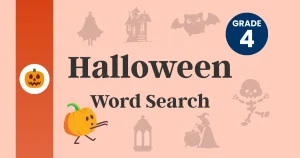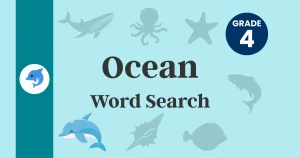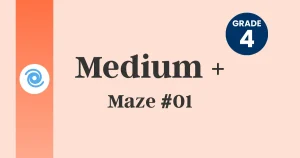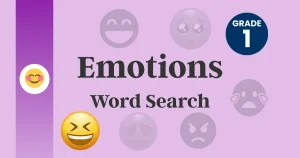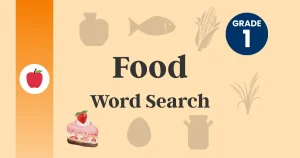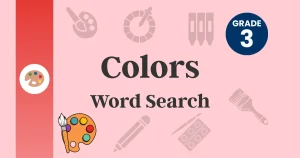🐾 Overview
This Grade 4 Animals Word Search combines fun and focus in a 15 × 15 grid designed for upper elementary students. Learners will encounter a variety of animals from land, sea, and air, challenging them to recognize longer spellings, spot diagonal patterns, and reinforce their knowledge of wildlife. The puzzle goes beyond entertainment—it builds concentration, improves vocabulary, and sparks curiosity about the natural world.
🎮 How to Play
- Look at the full list of animal words provided next to the grid.
- Scan the puzzle horizontally, vertically, or diagonally (↘ and ↗ only) to locate each word.
- Circle or highlight the letters once you find a word.
- Cross the word off the list to keep track of your progress.
- Continue until all the animals are found, and then compare your results with the provided answer key.
🎯 Learning Goals / Skills
- Expand animal-related vocabulary and spelling accuracy.
- Practice scanning skills and visual recognition of letter patterns.
- Strengthen attention to detail by tracking multiple directions in a larger grid.
- Build persistence and strategy, as longer words require systematic searching.
- Encourage curiosity about the diversity of animals around the world.
📖 Word List + Mini-Glossary
- ELEPHANT – the largest land mammal, with a trunk.
- GIRAFFE – a tall African animal with a very long neck.
- CROCODILE – a large reptile living in rivers, with strong jaws.
- KANGAROO – an Australian marsupial that hops on strong back legs.
- DOLPHIN – a playful marine mammal known for intelligence.
- CHEETAH – the fastest land animal, capable of sprinting at high speed.
- PENGUIN – a flightless bird that swims skillfully in cold waters.
- ALLIGATOR – a reptile similar to a crocodile, found in North America.
- HEDGEHOG – a small mammal covered with protective spines.
- CHAMELEON – a lizard that changes color to blend into its surroundings.
- OSTRICH – the largest bird in the world, unable to fly but very fast.
- LEOPARD – a spotted big cat known for agility and stealth.
- SQUIRREL – a small rodent that climbs trees and collects nuts.
- OCTOPUS – a sea creature with eight arms and high intelligence.
- TORTOISE – a land-dwelling reptile with a hard shell.
- PEACOCK – a colorful bird famous for its fan-shaped tail feathers.
- ARMADILLO – a mammal with an armored shell, found in the Americas.
- SEAHORSE – a tiny fish shaped like a horse, living in shallow seas.
- RACCOON – a nocturnal mammal with a striped tail and mask-like face.
- BUFFALO – a large wild ox, often seen in herds.
👩🏫 Teacher Tips
- Use a timer to add a sense of challenge and improve focus under mild pressure.
- For struggling students, allow them to work in pairs or small groups to build teamwork.
- Extend learning by asking students to write one fact about each animal after finding it.
- Integrate art by encouraging children to draw one animal they found and share with classmates.
- Encourage bilingual students to translate the word list into another language for extra practice.
🖨 Printable & Answer Key Notes
When printed, the puzzle produces a clear black-and-white grid suitable for photocopies. The blank version is ideal for classroom use, while the answer key shows all animals highlighted for quick checking. At home, families can print both versions—children can attempt the puzzle independently and then self-correct using the solution page. Teachers can also laminate copies for reuse, letting students mark answers with dry-erase markers.
